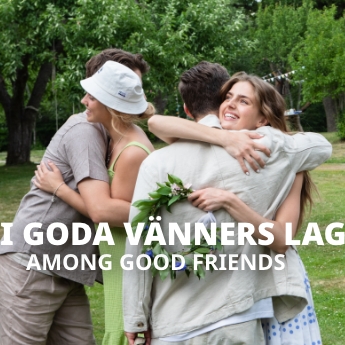
Stories from the north
Midsummer’s eve
Midsummer is a Swedish summer tradition, celebrated for hundreds of years. Midsummer is the time of year when the sun never really sets, and the magic of never-ending summer nights are welcomed with a flower decorated maypole, dancing, singing, typical summer food, friends and family.
The Midsummer maypole
The Midsummer maypole is richly decorated with leaves and topped off with two large flower wreaths, formed as a big cross-like statue of wooden poles. Songs and dances are held around it, and it doesn’t matter how many – or few – people there are to celebrate: the dancing will take place, no matter what! So what do we sing about? Well – jumping frogs, laundry day, and the famous fox sneaking around an iced lake… of course with matching dances.



The magic of the Midsummer night
The night of Midsummer’s eve is magical. Today, the magic lies in the fact that the sun never sets, enjoy the company of family and friends, maybe take a midnight swim and feel the silence of nature in the evening.
However, hundreds of years ago this magical night was something else: it was a way for farmers to wish for rich crops and a good harvest. Young girls would pick flowers in silence, in the hopes of dreaming of their future husbands – and if you were to roll around in the dewy meadow, you could significantly strengthen your health.

Midsummer is the holiday of friends
If Christmas is a family holiday, Midsummer is more of a holiday for friends. We gather to eat sill (herring in different pickled variations) summer potatoes, sour cream with green onions and of course to drink nubbe. Nubbe – or ”snaps” – is a Swedish hard liquor, originally made from potatoes or grain, and is always served ice cold. And since singing is a big part of the Midsummer celebration, you can’t drink a nubbe without a small song. After the song, you raise the small glass (snapsglas) and cheer ”SKÅL”. After that, the night never seems to end!

